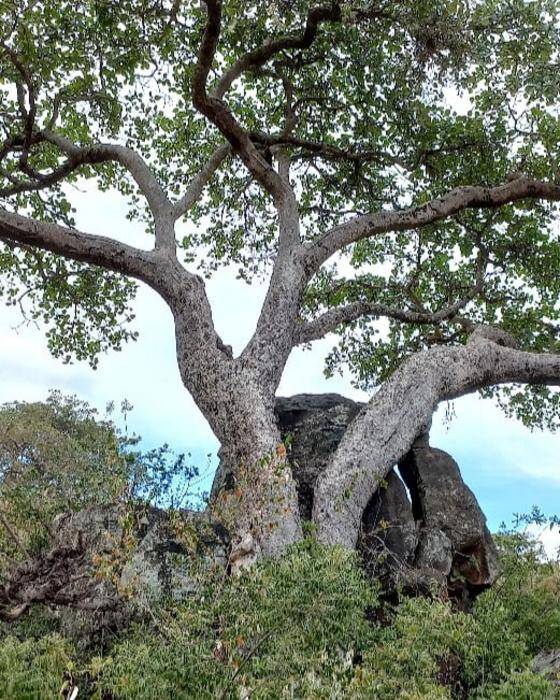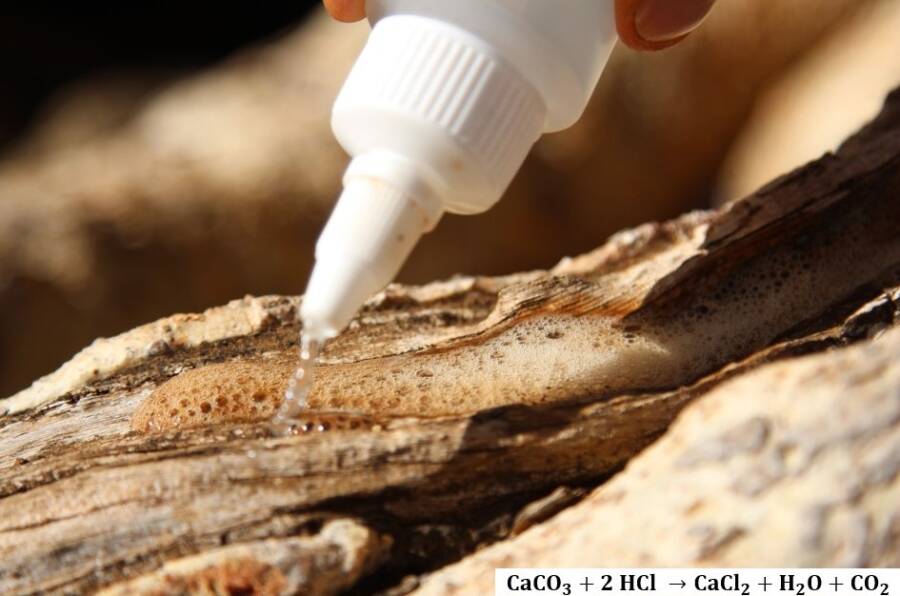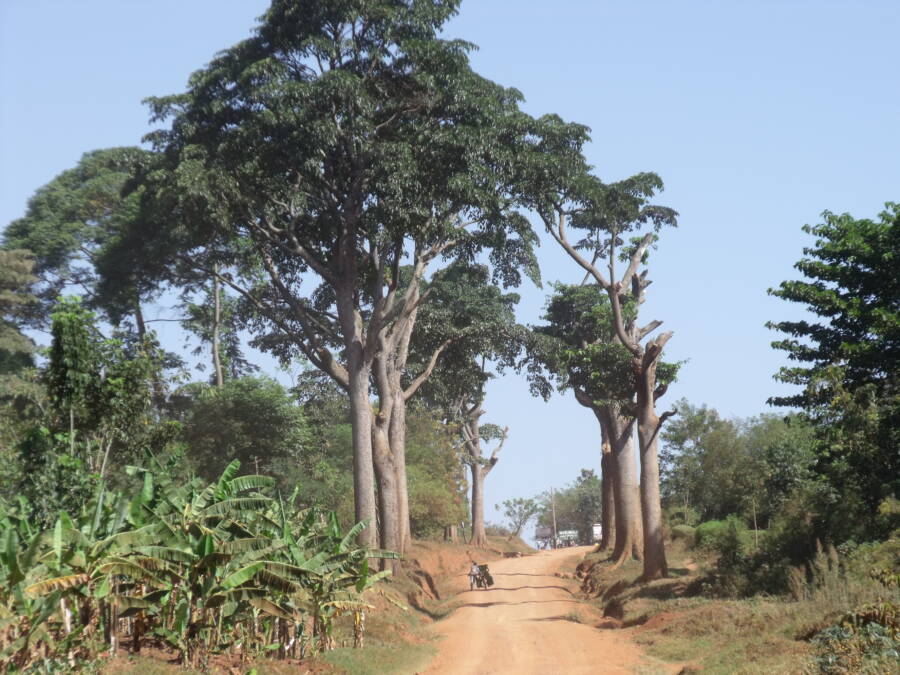Calcium carbonate deposits produced by African fig trees could provide a sustainable method of slowing climate change.

Mike RowleyA fig tree in Africa that produces “rocks” of calcium carbonate in the soil.
Elementary school science teaches that trees produce the oxygen we breathe, and we, in turn, exhale carbon dioxide for trees to absorb. That isn’t where the process ends, though.
Some trees can convert that extra carbon dioxide to limestone in their trunks — and researchers have now identified three species of fig trees native to Kenya that are some of the first fruit trees shown to have this ability. Now, researchers are hopeful that this discovery could help slow climate change.
Carbon Rocks Grown By Fig Trees Could Be A Boon For Agroforestry
“We’ve known about the oxalate carbonate pathway for some time, but its potential for sequestering carbon hasn’t been fully considered,” Dr. Mike Rowley, a senior lecturer at the University of Zurich, said in a news release.
Rowley and a team of international researchers focused on three species of figs: Ficus wakefieldii, Ficus natalensis, and Ficus glumosa. All three species convert carbon dioxide into limestone that becomes interwoven throughout their bark and wood, but Ficus wakefieldii performed the best.
So, why does this matter in the first place?

Mike RowleyA reaction that occurs when an acid is applied to fig tree wood indicates the presence of calcium carbonate.
“If we’re planting trees for agroforestry and their ability to store carbon dioxide as organic carbon, while producing food, we could choose trees that provide an additional benefit by sequestering inorganic carbon also, in the form of calcium carbonate,” Rowley said.
Calcium carbonate typically remains trapped in soil longer than organic carbon. Thus, planting trees that can store carbon in both ways could help slow climate change. Additionally, since the trees carrying out this process are figs, there is an extra incentive to grow them, as they produce a food crop.
“As the calcium carbonate is formed, the soil around the tree becomes more alkaline,” Rowley said. “The calcium carbonate is formed both on the surface of the tree and within the wood structures, likely as microorganisms decompose crystals on the surface and also penetrate deeper into the tree. It shows that inorganic carbon is being sequestered more deeply within the wood than we previously realized.”
Considerations For The Fig Tree’s Suitability For Agroforestry
Rowley and his teammates recently presented this research at the Goldschmidt geochemistry conference in Prague.
Previous research into the oxalate carbonate pathway has mostly been carried out in tropical habitats and focused on trees that do not produce food. The first such tree to be identified in this regard was the Iroko (Milicia excelsa), which can sequester one ton of calcium carbonate in the soil over its lifetime.

Fenrith/Wikimedia CommonsIroko trees growing in Uganda.
“It’s easier to identify calcium carbonate in drier environments,” Rowley explained. “However, even in wetter environments, the carbon can still be sequestered. So far, numerous species of tree have been identified which can form calcium carbonate. But we believe there are many more.”
Another consideration researchers identified are the trees’ water requirements and fruit yields, both of which could affect the their suitability for agroforestry. Scientists are also hoping to investigate how much carbon dioxide can be sequestered under different conditions.
After reading about the fig trees that can turn carbon dioxide into limestone, learn about the oldest tree in the world. Then, go inside the history of Christmas trees.





